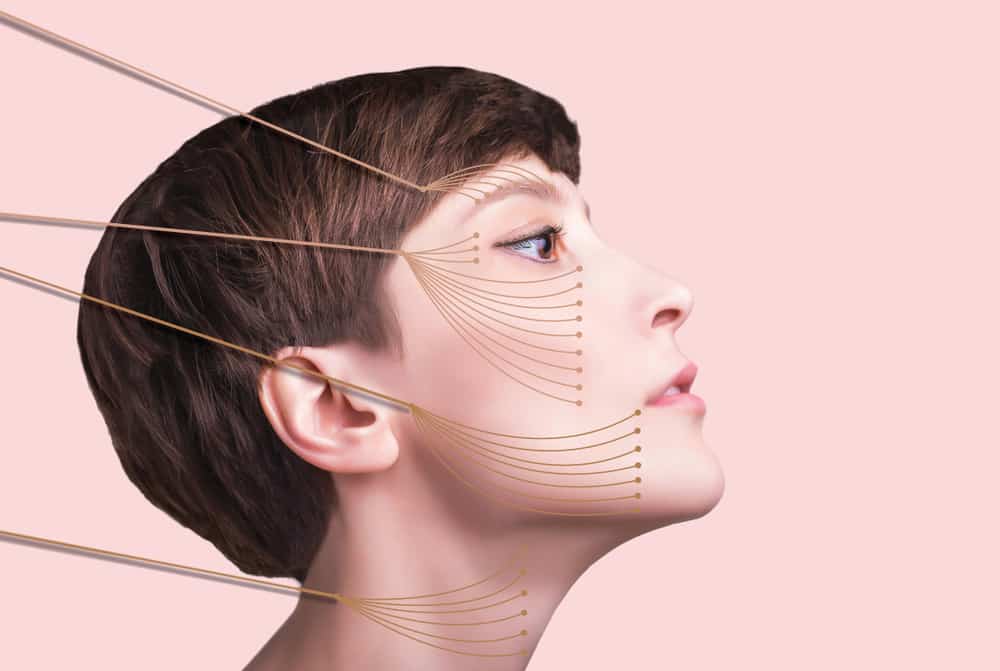Perfectly smooth and flawless skin is everyone’s dream? But sadly there are a lot of common skin problems that stop us from having an unblemished skin. Acne scars, sun spots, fine lines and wrinkles, large pores, reduced skin elasticity, and uneven skin tone are among those common problems.
Collagen is a structural component of the skin that provides support and gives youthful shape and contour. The radiance and glow of youth are the result of cell turnover and renewal, and light reflecting off smooth skin. Increased blood flow also contributes to glowing skin by delivering oxygen and nutrients to the skin, keeping it healthy and helping to mitigate damage.
As we age, cell turnover and renewal slows down causing dead skin cells to accumulate, which dulls the skin. Environmental factors like smoking, pollution, stress and sun damage break down collagen leading to uneven texture, wrinkles and hollows.
Won’t it be great if there was a way to get rid of these skin problems? This is where microneedling enters the picture.
Microneedling is a cosmetic procedure that treats all common skin problems. To achieve long-lasting facial rejuvenation, microneedling has become quite popular in the past few years. However, an advanced form of microneedling was introduced recently. It is called Radiofrequency Microneedling.
Microneedling has become an increasingly popular treatment. Professional microneedling (also known as Collagen Induction Therapy) is a minimally invasive skin rejuvenation treatment that can dramatically improve the skin with little pain and no downtime.
Now, an innovative treatment combines microneedling with the addition of radiofrequency (RF) energy. These new RF Microneedling devices are designed to dramatically enhance the benefits of traditional microneedling.
Here’s a comparison of traditional microneedling and RF microneedling:
TRADITIONAL MICRONEEDLING
In traditional microneedling, a specialized device is rolled over the skin to create controlled micro injuries in the form of tiny microscopic punctures along the skin. These minor skin injuries stimulate the skin’s natural healing process resulting in the production of skin firming proteins like elastin and collagen. Newly developed growth factors work to thicken the skin and reduce the appearance of wrinkles, acne scarring, sun damage, and stretch marks. Punctures from microneedling can also act as channels for enhanced delivery of topical skincare treatments like hyaluronic acid.
As we know, sometimes we found on the internet some people show how to DIY microneedling at home. The question is, is it safe? What are the differences between at-home microneedling and microneedling by the doctor?
For safety reasons, because these devices aren’t supervised, at-home microneedling tools tend to penetrate only the very surface of the skin. Because of this, while they may have temporary brightening effects by helping to exfoliate dead skin cells, they typically do little in actually stimulating collagen synthesis and promoting longer-lasting firming or smoothing effects. In addition, at-home devices may or may not have disposable tips or a mechanism for sterilization. If needles aren’t clean, bacteria or other microbes could be transferred into the skin risking infection. In contrast, in Lumina Aesthetics Clinic devices have sterilized disposable tips and have multiple depths of penetration. This allows needles to reach into collagen, elastin, and superficial blood vessels promoting tissue remodeling, which can tighten skin, improve texture and minimize acne and other scars.
RF MICRONEEDLING
RF microneedling adds radio frequency (RF) energy to the traditional microneedling technique in order to further stimulate the creation of growth factors. RF microneedling uses specialized “energized” needles to create micro-punctures along the skin and deliver radiofrequency energy through these punctures simultaneously. The addition of radiofrequency energy deep into the dermis amplifies the production of skin improving proteins and enzymes like collagen, elastin, and hyaluronic acid than traditional microneedling alone. Added RF energy also heats underlayers of the skin which further enhances skin tightening.
What Makes RF Microneedling Better?
RF microneedling is better than the traditional microneedling due to the following reason:
- IT TREATS MULTIPLE PROBLEMS
The introduction of RF produces far better results than traditional microneedling. It is capable of treating much more skin problems than the traditional microneedling. Anyone can achieve total facial rejuvenation with RF microneedling. It treats fine lines and Wrinkles, hyperpigmentation stretch marks, acne scars, enlarged pores, sunspots, and skin laxity.
- IT TARGETS DEEPER SKIN LAYERS
RF microneedling targets deeper layers of the skin without damaging the top layers of the skin. This is possible because the RF energy is delivered past the tip of the tiny needles to deep skin layers. It effectively stimulates collagen production and tightens the skin.
- IT IS MORE CUSTOMIZABLE
The device used in RF micro-needling treatments is customizable. The puncture depth and RF energy intensity can be easily adjusted for different patients. It depends on the needs of the patient. You can have a minor skin-enhancing treatment or even a deeper skin tightening procedure.
- IT IS MORE EFFECTIVE
Traditional micro-needling stimulates collagen production but RF micro-needling amplifies the skin tightening process. Thus, it is more effective in reducing wrinkles, acne scars, sun damage, and other skin problems.
Can microneedling RF achieve results similar to laser skin resurfacing?
Microneedling RF is designed to be a less invasive procedure that requires a series of treatments to target fine lines and tighten skin. In general, results are more subtle than those that can be achieved with laser resurfacing. Laser resurfacing, especially with the fractionated CO2 laser requires 7-10 days of healing, whereas microneedling RF treatments usually cause a few hours to one day of minimal swelling, which is very attractive to those with busy lifestyles. In addition, whereas laser resurfacing cannot be safely used on darker skin, microneedling RF can serve as a safe alternative.
The benefit of adding platelet rich plasma to both traditional microneedling and microneedling RF..
Platelet rich plasma (PRP) is a highly concentrated form of platelets and other healing factors derived from a patient’s own blood. Adding PRP topically to the skin after microneedling and microneedling RF accelerates recovery and can improve overall cosmetic outcomes by enhancing wound healing. A patient’s blood is drawn, platelets are isolated through a very precise spinning process using premier technology, and then they are applied to the skin after microneedling or microneedling RF. PRP travels down the micro-wounds created by these procedures to better penetrate the dermis layer of the skin where they enhance healing, collagen, and elastin synthesis. PRP is completely natural and nicely compliments these procedures.
Which one you will choose after reading this blog, Traditional Microneedling or RF Microneedling? Both can be helpful for acne scarring using a series of treatments. The added RF can give synergistic effects, which often leads to fewer treatments than microneedling alone.
Book your consultation with our doctor here at Lumina Aesthetics Clinic.
📱+6281228888837
📱+6281226254127
📱+6281228888847
📱+6281210688884
🌎www.luminaaesthetics.com






